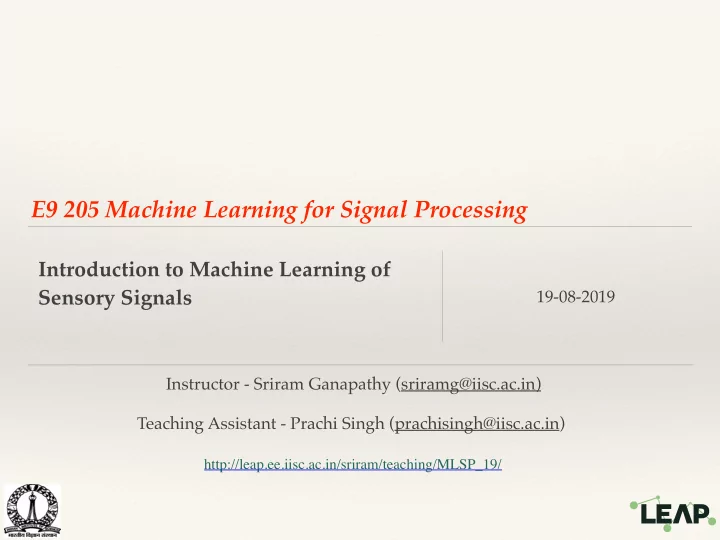

E9 205 Machine Learning for Signal Processing Introduction to Machine Learning of Sensory Signals 19-08-2019 Instructor - Sriram Ganapathy (sriramg@iisc.ac.in) Teaching Assistant - Prachi Singh (prachisingh@iisc.ac.in) http://leap.ee.iisc.ac.in/sriram/teaching/MLSP_19/
Feature Extraction Scope for this course I. Feature Extraction in Text. II. Feature Extraction in Speech and Audio signals. III. Processing of Images.
Speech and Audio Processing
Summary of STFT Properties
Narrowband versus Wideband ❖ Short windows - poor frequency resolution - wideband spectrogram ❖ Long windows - poor time resolution - narrowband spectrogram
Spectrogram of Real Sounds Dan Ellis, “STFT Tutorial”
Narrowband versus Wideband Dan Ellis, “STFT Tutorial”
Mel Frequency Cepstral Coefficients
Mel Frequency Cepstral Coefficients
Mel Frequency Cepstral Coefficients
Mel Frequency Cepstral Coefficients
Image Processing
Image Capture and Representation
Image Capture and Representation
Image Filtering
Image Filtering
Edge Detection Example
Convolution Operation in Images
Matrix Derivatives (Appendix C, PRML, Bishop)
Dimensionality Reduction - PCA (Chapter 12.1, PRML, Bishop)
Principal Component Analysis ❖ Reducing the data of dimension to lower dimension ❖ Projecting the data into subspace which preserves maximum data variance ❖ Maximize variance in projected space ❖ Equivalent formulated as minimizing the error between the original and projected data points.
Recommend
More recommend